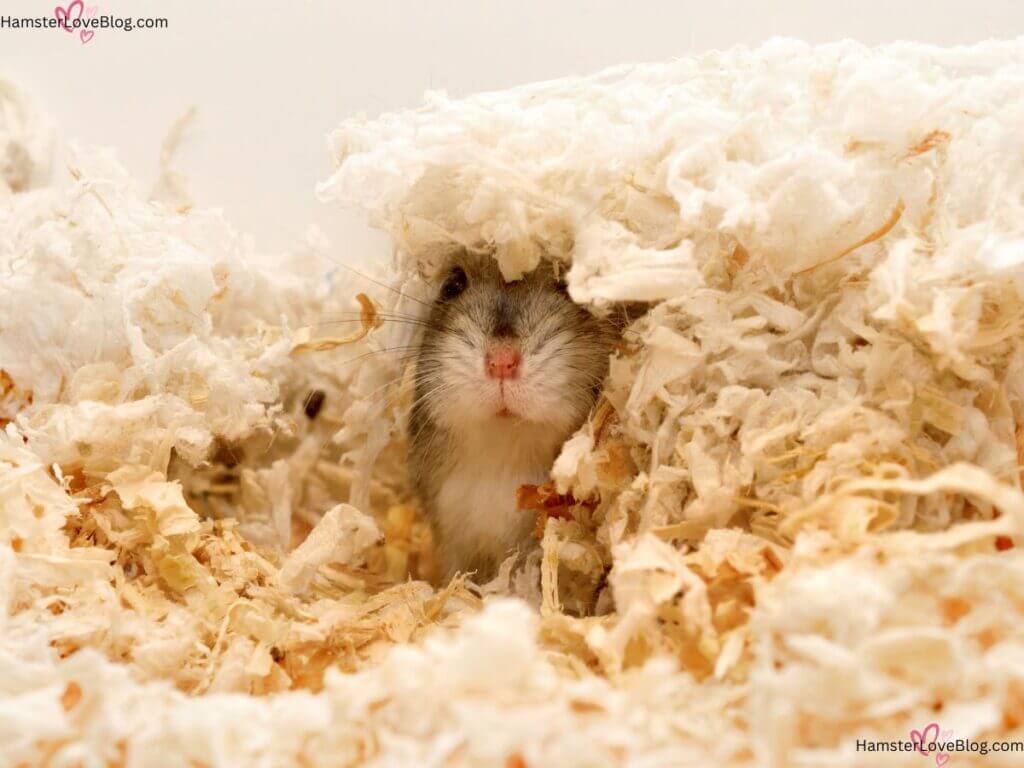
Did you know that understanding how to handle a shy hamster can make a significant difference in your furry friend’s well-being and overall happiness? Hamsters are known for their timid nature, and providing the right care and interaction is crucial for helping them thrive. In this comprehensive guide, we will explore valuable tips and techniques to create a nurturing environment for shy hamsters and build a strong bond based on trust and patience.
Signs of a Shy Hamster
Understanding a hamster’s behavior is crucial in providing the best care possible. When it comes to shy hamsters, there are specific signs to look out for that can indicate their temperament.
Recognizing Shyness in Hamsters
- Avoidance of interaction: Shy hamsters may retreat to their hideouts when approached.
- Freezing or hiding: They might freeze in place or quickly hide when they feel frightened.
- Nervous behaviors: Hamsters may exhibit nervous behaviors like excessive grooming or restless movements.
Importance of Identifying Shyness

Identifying shyness in your hamster is essential for tailoring your interactions to suit their needs. By recognizing these signs, you can create a supportive environment that helps your shy hamster feel safe and secure.
To learn more about hamster behavior, refer to reputable sources such as the American Society for the Prevention of Cruelty to Animals (ASPCA) guide on small pets: ASPCA Small Pets Guide.
Creating a Safe Environment
Creating a safe and comfortable environment is essential for helping shy hamsters feel secure in their surroundings.
Setting Up the Ideal Habitat
- Provide ample bedding for burrowing and digging.
- Offer a variety of hideouts and tunnels for hiding spots.
- Ensure the cage is located in a quiet area to minimize stress for your hamster.
Tips for Creating a Comfortable Space
Adding soft bedding materials like shredded paper or aspen shavings can create a cozy nest for your shy hamster. Additionally, incorporating natural wooden chew toys and a running wheel can provide mental stimulation and physical exercise.
Importance of Hiding Spots and Enrichment Activities
Having plenty of hiding spots allows shy hamsters to retreat when they feel overwhelmed. Enrichment activities such as puzzle feeders or scent trails can help stimulate their curious nature and build confidence over time.
Bonding Techniques and Handling Tips
Building trust and a strong bond with a shy hamster requires patience and gentle handling techniques.
Patience in Building Trust
- Approach your hamster calmly and speak softly to avoid startling them.
- Spend time near the cage to allow your hamster to get used to your presence.
Gentle Handling Techniques
When handling your shy hamster, use slow movements and avoid sudden gestures. Allow your hamster to come to you at their own pace and offer treats as positive reinforcement for good behavior.
Building a Strong Bond Through Positive Interactions
Engage in daily handling sessions to help your hamster become more comfortable with human contact. Ensure that interactions are positive and rewarding to strengthen the bond between you and your shy hamster.
Building Confidence in Your Hamster
Helping your shy hamster build confidence is key to their overall well-being and happiness.
Encouraging Exploration and Playtime
- Introduce new toys and enrichment activities to stimulate your hamster’s curiosity.
- Create obstacle courses or hiding spots to encourage exploration in a safe environment.
Gradual Exposure to New Stimuli
Slowly introduce your hamster to new sights, sounds, and smells to prevent overwhelming them. By gradually exposing them to different stimuli, you can help build their confidence over time.
Boosting Your Hamster’s Confidence Through Positive Reinforcement
Reward your hamster with treats and praise when they display confident behaviors. Positive reinforcement can help reinforce positive associations and encourage your shy hamster to step out of their comfort zone.
Handling Common Challenges
Navigating challenges when handling a shy hamster requires patience and understanding to help them feel secure.
Addressing Aggression or Fear in Shy Hamsters
- Identify triggers that may cause fear or aggression in your hamster.
- Use gentle movements and soft spoken tones to help calm your hamster in stressful situations.
Dealing with Timid Behavior During Interactions
If your hamster displays timid behavior, such as hiding or avoiding contact, give them space and time to feel comfortable. Avoid forcing interactions and allow them to approach you when ready.
Tips for Overcoming Challenges in Handling a Shy Hamster

Implementing consistent handling routines, providing enriching activities, and offering treats can help build trust and alleviate fear in shy hamsters. By addressing these challenges with care and patience, you can create a positive experience for both you and your hamster.
Socialization and Playtime
Socialization and engaging activities play a vital role in helping shy hamsters come out of their shells and build confidence.
Importance of Socialization for Shy Hamsters
- Interacting with your hamster regularly can help reduce fear and promote positive behaviors.
- Socialization aids in developing a bond and trust between you and your shy hamster.
Engaging Activities to Help Your Hamster
Introduce interactive toys, tunnels, and exercise wheels to provide mental stimulation and encourage physical activity. Rotation of toys and sensory experiences can pique your hamster’s curiosity and encourage exploration.
Tips for Introducing Your Hamster to New Experiences
Gradually expose your hamster to new environments and experiences to prevent overwhelming them. Create a safe and controlled space for exploration, allowing your shy hamster to adjust at their own pace.
Creating a Routine for Your Shy Hamster
Establishing a consistent routine is essential for the well-being of a shy hamster and can help them feel secure in their environment.
Setting Up a Structured Feeding and Handling Schedule
- Feed your hamster at the same times every day to establish a routine.
- Consistent handling sessions can help your hamster feel more at ease with human interaction.
Implementing a Routine to Reduce Stress and Anxiety
Regularity in activities such as cleaning their cage, providing fresh water, and offering treats can create a predictable environment that promotes a sense of security for your shy hamster.
Benefits of a Structured Routine for Shy Hamsters
A structured routine provides predictability, which can reduce stress and anxiety in shy hamsters. Consistency in care and interactions helps build trust and comfort, contributing to a happy and healthy hamster.
Seeking Professional Help
Knowing when to reach out to a veterinarian or animal behaviorist can provide valuable support in handling a shy hamster effectively.
When to Consult a Professional
- If your hamster exhibits persistent signs of stress or fear despite your efforts.
- In case of unexplained changes in behavior or sudden aggression towards handling.
Signs That Your Hamster May Need Professional Assistance
Constant hiding, refusal to eat, or excessive grooming could indicate underlying issues that require expert intervention. Seeking professional help ensures the well-being of your shy hamster and addresses any potential health or behavioral concerns effectively.
Importance of Expert Guidance in Handling a Shy Hamster
Veterinarians and animal behaviorists can offer specialized knowledge and guidance tailored to your hamster’s specific needs. Their expertise can provide valuable insights on how to handle, care for, and address any issues concerning your shy hamster.
FAQ Section
How can I help my shy hamster feel more comfortable in its environment?
Creating a safe and secure habitat with plenty of hiding spots and enrichment activities can help your shy hamster feel more at ease. Providing a routine feeding and handling schedule can also contribute to their sense of security.
What should I do if my shy hamster shows signs of aggression during handling?
If your shy hamster displays aggressive behavior, it’s essential to avoid sudden movements and give them space. Slowly acclimate them to handling by using gentle techniques and positive reinforcement.
Is socialization important for shy hamsters?
Socialization plays a crucial role in helping shy hamsters build confidence and trust with their owners. Regular interactions, engaging activities, and exposure to new experiences can positively impact their well-being.
How can I establish a bond with my shy hamster?
Building a bond with a shy hamster requires patience, consistency, and gentle handling. Spend time near their cage, offer treats, and create a nurturing environment to foster a trusting relationship.
When should I seek professional help for my shy hamster?
If your shy hamster exhibits persistent signs of distress, unexplained behavioral changes, or health issues, it’s advisable to consult a veterinarian or animal behaviorist for expert guidance and support.





